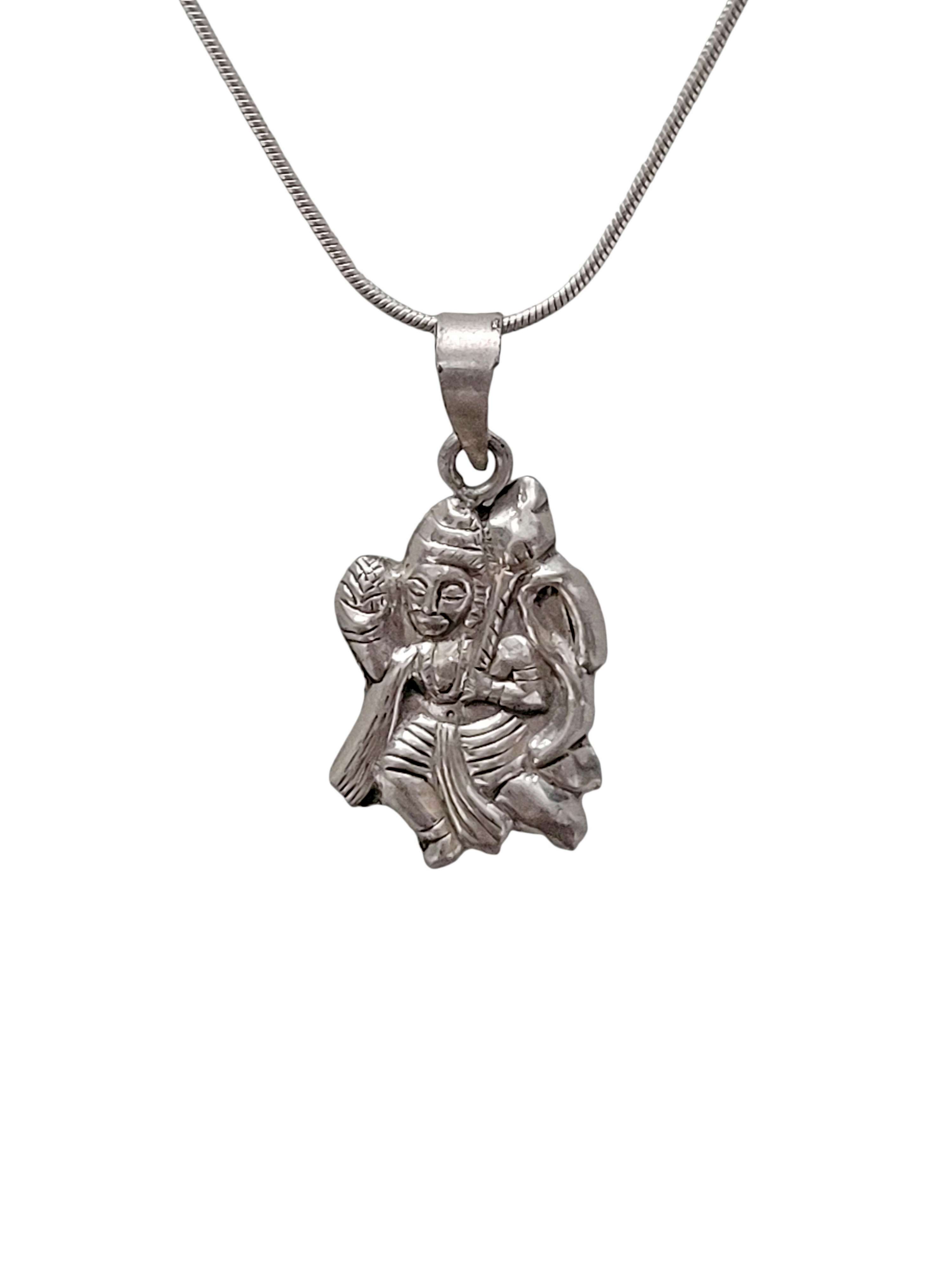Mantra Amulet
these amulets are widely used by buddhist followers and devotees as the Jantra, not just for spiritual enlighten and good Fortune, But also as a shield protection from evil. These amulets are not just made to sell but are blessed by the High priest before they are send to be sold. They have all the required mantra and material needed to keep Oneself spiritually protected, and blessed.
Some may also define it as a small temple of the god with his / her mantra which you carry on yourself everywhere you go.
Read More
Hanuman : Brief Introduction
Hanuman is a Hindu god and divine vanara companion of the god Rama. Hanuman is one of the central characters of the Hindu epic Ramayana. He is an ardent devotee of Rama and one of the chiranjeevi's. Hanuman is also son of the wind-god Vayu, who in several stories played a direct role in Hanuman's birth. Hanuman is mentioned in several other texts, such as the epic Mahabharata and the various Puranas.
Evidence of devotional worship to Hanuman is largely absent in these texts, as well as in most archeological sites. According to Philip Lutgendorf, an American Indologist, the theological significance of Hanuman and devotional dedication to him emerged about 1,000 years after the composition of the Ramayana, in the 2nd millennium CE, after the arrival of Islamic rule in the Indian subcontinent. Lutgendorf also writes that the skills in Hanuman's resume also seem to derive in part from his windy patrimony, reflecting Vayu's role in both body and cosmos. Bhakti movement saints such as Samarth Ramdas have positioned Hanuman as a symbol of nationalism and resistance to persecution. The Vaishnava saint Madhva said that whenever Vishnu incarnates on earth, Vayu accompanies him and aids his work of preserving dharma. In the modern era, Hanuman's iconography and temples have been increasingly common. He is viewed as the ideal combination of "strength, heroic initiative and assertive excellence" and "loving, emotional devotion to his personal god Rama", as Shakti and Bhakti. In later literature, he is sometimes portrayed as the patron god of martial arts such as wrestling and acrobatics, as well as activities such as meditation and diligent scholarship. He symbolizes the human excellences of inner self-control, faith, and service to a cause, hidden behind the first impressions of a being who looks like an Ape-Man Vanara. Hanuman is considered a bachelor and exemplary celibate.
Some scholars have identified Hanuman as one potential inspiration for Sun Wukong, the Monkey King character in the Chinese epic adventure Journey to the West.
Read More
Silver Pendant : About Silver Pendant
A Nepali silver pendant is a beautiful piece of jewelry that is often adorned with semi-precious stones and intricate designs. These pendants are often made by skilled artisans in Nepal who use traditional techniques and designs that have been passed down through generations.
One popular feature of Nepali silver pendants is the use of semi-precious stones such as turquoise, coral, amethyst, or lapis lazuli. These stones are believed to have special powers and significance in astrology and are often used in Nepali jewelry to bring luck, prosperity, and protection to the wearer.
The designs of Nepali silver pendants can vary widely, ranging from simple and understated to intricate and elaborate. Many pendants are engraved with intricate patterns, symbols, or religious motifs that are important in Nepali culture and heritage.
In addition to their aesthetic appeal, Nepali silver pendants are also valued for their craftsmanship and durability. They are often made using high-quality silver that is known for its strength and resistance to tarnishing.
Overall, a Nepali silver pendant is a beautiful and meaningful piece of jewelry that represents the rich culture and heritage of Nepal. It is a treasured possession that can be worn with pride and enjoyed for years to come.
Read More
